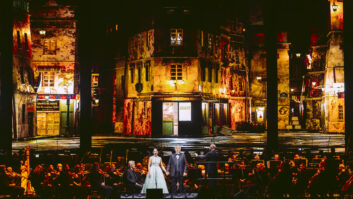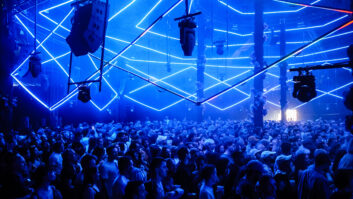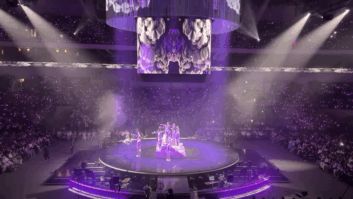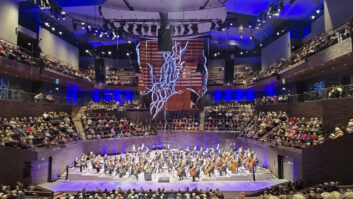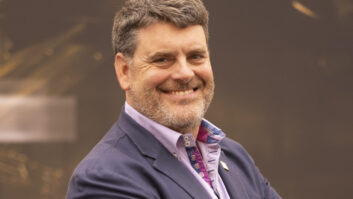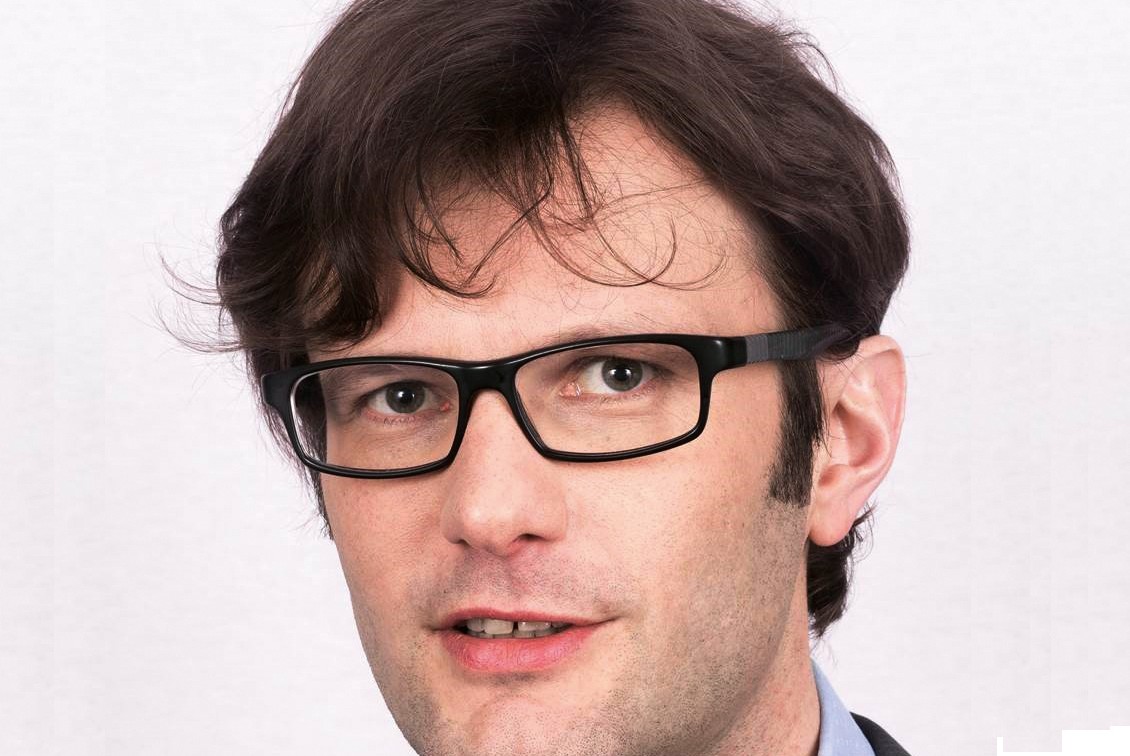
Phil Ward talks to L-Acoustics’ director of application, install, and finds that the home of the V-DOSC loudspeaker system has harboured a commitment to point source and fixed installation from the very beginning
How does the new X Series develop L-Acoustics’ installation offer?
The X Series takes over from the XT range, and especially the XT(i) range that produced installation-specific versions of the speakers as opposed to the mobile, or ‘production’ versions. We think of the X Series as a major advancement into the install markets: most of the coaxials – apart from the stage monitors in the range – are sold into installation. We felt that we should have unique products in this sector, which nevertheless combine the best of both worlds. It has more SPL, more stability, but also we needed a complete range of accessories that could be adapted to the ever-widening applications in this area.
So the key to this range is its versatility?
Exactly. L-Acoustics has been making loudspeakers for the theatre and for performing arts centres since the company started in the 1980s – everyone knows L-Acoustics for the V-DOSC – but before this large-scale touring system we started out in the theatre business. We specialised in multi-coloured speakers for the proscenium arches of traditional Paris theatres, so we’ve been doing this type of install product for 30 years now. Installation represented the first ever sales.
How have you adapted as this sector has grown?
We’re still very strong in performing arts venues, but there has been steady expansion into house-of-worship and sports facilities, especially, and latterly we’ve expanded into the realm of PA/VA. This includes airports, such as Dubrovnik – where there is an L-Acoustics rig for the gate announcements and so on – and more and more into cruise ships. These are markets that lead us also into weather-resistant solutions, so to go from XT range to X Series is not just to move from one type of performance to another but also to move into completely new markets that need much better protection for the speakers. There has been a long development of new coatings, new paints and everything.
Is this reflected in the new woodwork facility in Alsace?
Of course. We’ve been recruiting people from outside pro audio, from the car industry and elsewhere, people with wider industrial knowledge, and we’ve completely changed some of the manufacturing processes. When we built the new facility, we took the opportunity to add more techniques into making the speakers.
And how has the ‘VA’ side of things been added to your manufacturing?
Not so much in the speakers themselves, but in the electronics. We’ve integrated a lot more of this over the last six or seven years, as well as building an R&D team dedicated to it. With the electronics, we’ve integrated the features you need to comply with a VA system. Basically it means better control and monitoring of the systems, as well as managing the signal in more detail and improving fault management. It derives very strictly from the latest specifications in EN54 and EN6049, for example.
The situation is complicated by the fact that, while these regulations were set for standard high-impedance boxes, the stadium owners and purchasers like FIFA want high-quality, low-impedance systems like ours for better quality entertainment at events – and the regulations have not been developed for them. So there is a grey area, and we now work with Roland Hemming and other specialists to address PA/VA, ‘evac’ and other EN54 issues to ensure that our systems will fulfil all the requirements.
Are we moving towards a resolution of this expensive anomaly?
Yes, but only in Europe. In the US there is still a big gap between PA and VA. This year we did three NBA arenas, and in each one there are very separated systems. There are K2 systems for big productions during the games, and different systems for voice evacuation and so on. They don’t want to merge the systems. In Europe, they’ll install a PA that’s eight times more powerful than the evac system, after which they don’t want to use the weaker system at all. The intelligibility is so much better on the big system, so the attitude is ‘why should we use the other system at all?’ Also to pay to install the smaller system alongside the larger system, which can handle all of the audio at a much higher performance level, makes no financial sense.
Asia markets tend to be more like the US, too – still with totally separate systems – although the Middle East follows Europe more closely and is more willing to integrate PA and VA in one system that, quite naturally, is optimised for better sound quality.
Will networking help?
Network audio is on the agenda now, which is why we signed up for the AVnu Alliance. So we are now adapting our current lines to be AVB ready and, in the future, we’ll have AVB integrated into our systems. This will be the L-Acoustics solution.
What are the advantages of AVB over anything else?
The ideal would be for everyone to have working with the interoperability of an AES standard, such as AES67, but I’m not sure this is going to happen. When we looked at all the different protocols, we wanted to pick one and stay with it in order to keep down the costs that we pass on to our customers. AVB technology is more affordable for our clients, it works well and we think it will become a standard in the next five years. This doesn’t mean we’re ignoring the other providers of network technology, but we wanted a protocol that we could develop ourselves at this stage – AVB is more open source than any of the others. Even without that, we think it’s the right way forward for the next 10 years.
Is it a way of distinguishing L-Acoustics from some of the competition?
We never think about the competition. We know they exist, but to be honest our real competition is with video and lighting companies! How much of the venue’s budget do they get instead of us? We have to share it with them, so we compete. But in fact we concentrate exclusively on the market we want to address, and on developing the speaker, the directivity and the accessories that will help the end user and the sound designer achieve what they want to achieve. There is always that in mind during the development process.
Apart from the X Series, what else in the portfolio covers installation?
The X Series is derived from everything we know about the installation market, from terminal blocks to U-tilt brackets, but it can also be used in production. By the same token, the ARCS series can be considered an installation-ready product: below a certain scale, a speaker can be used in fixed installation. In fact up to KIVA, with its very integrated rigging, most of the development has been driven by installation. Beyond that, we’re at a point where we’re moving into touring, starting with KARA.
Even then, there are two versions of KARA: one for production, used in conjunction with K1 or K2 using all the necessary rigging; and one more cost-effective version, keeping all the same acoustic properties but rigged only once – KARAi.
How long have you been at L-Acoustics?
I joined in 2003 as an assistant to Paul Bauman, at that time the technical support manager – one guy, so you can see how we were much smaller then! He was an expert in the touring business, and when I saw the potential that we had in the installation market I suggested we develop product features, and more business support, in this direction. We already had this business in France, as I said especially in theatres, but I realised we had to make it international. I then got the opportunity to develop this side of the business in all of the territories where L-Acoustics is represented.
Where did the journey to L-Acoustics start?
I had been a musician in Paris but, like everyone else, eventually I was faced with the choice between enjoying that life or earning some money. I went to a media college where I studied audio post-production for movies, as well as working in sound reinforcement and production at various places. I was always really interested in how the sound systems were put together, wherever I went.
For my sound design thesis I looked at simulation software, including the L-Acoustics package, and when I got the chance I had the nerve to tell Christian [Heil] that the L-Acoustics software didn’t work as well as it could! It must have been the right thing to say, because he asked me to join the company…
You look like a jazz musician…
Correct! I play the saxophone.
So it would be really cool if L-Acoustics was installed in…?
Le Baiser Salé, near Chatelet, or New Morning. Those are the Parisian jazz clubs that really retain an authentic feel. Now that’s an application…



